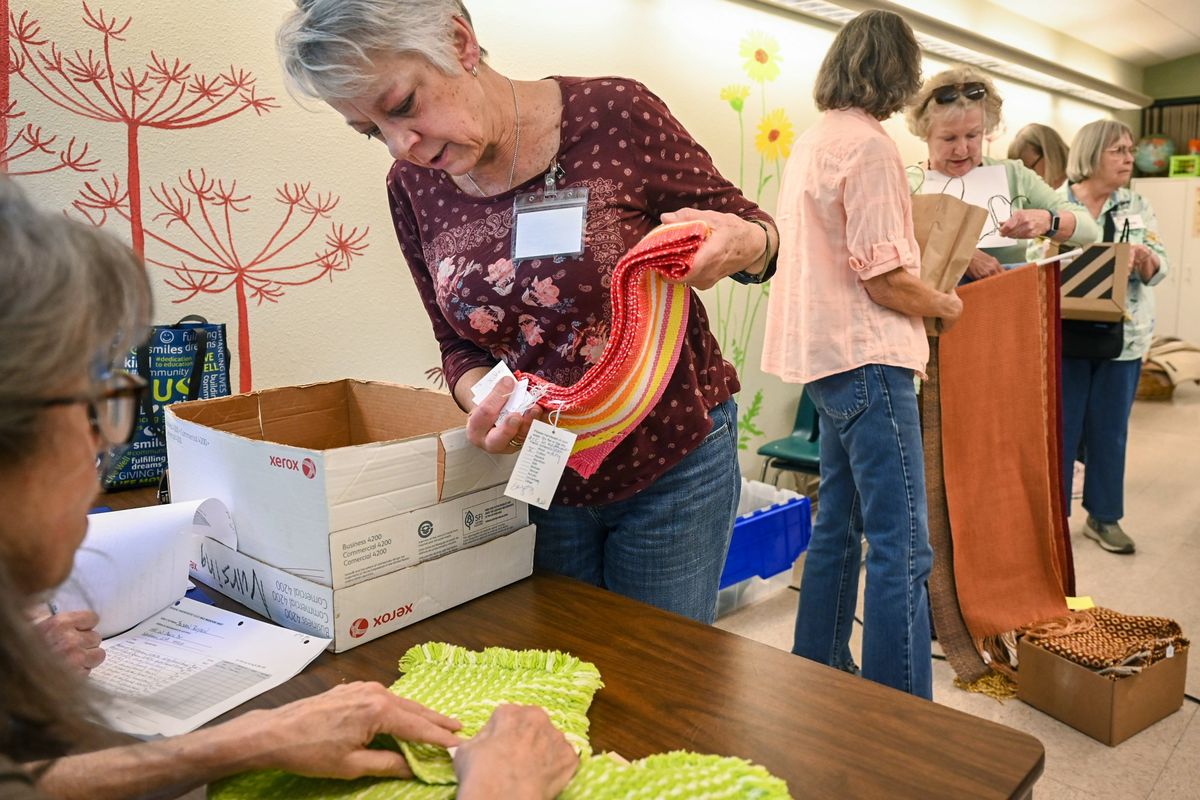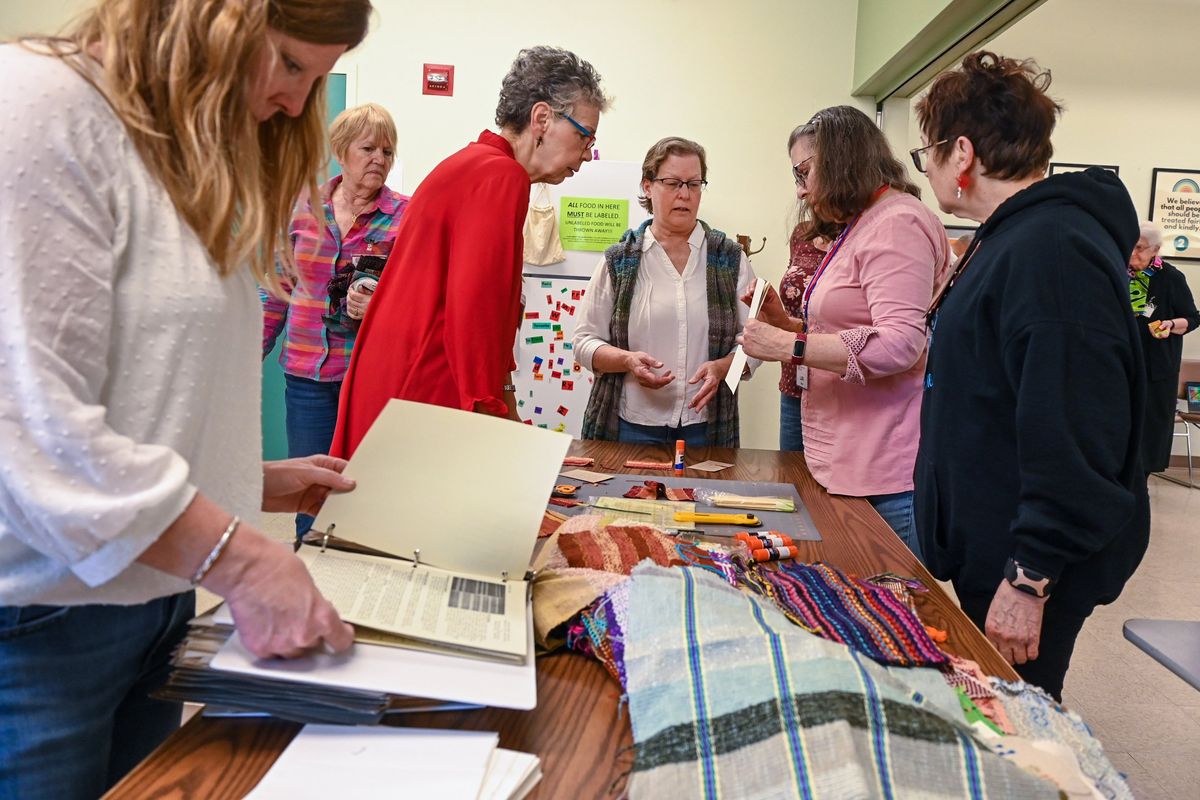Spokane Handweavers’ Guild adds community to often solitary endeavor

In 1948, 15 men and women established the HandwWeavers’ Guild of the Inland Empire. Seventy-five years later, the renamed Spokane Handweavers’ Guild is flourishing with 65 members.
This weekend, the guild will celebrate with a show and sale at Barrister Winery. The event features 325 items made by 15 weavers. Shoppers can browse among offerings including handwoven dishtowels, scarves, rugs and potholders.
“You can buy textiles on Amazon, but they don’t have a unique individual weaver’s stamp on it,” guild president Lori Remz said.
She got hooked on the craft as a child.
“I had one of those little potholder looms, so everybody got potholders for Christmas and Hanukkah,” she said.
She took weaving lessons in her mid-20s.
“There’s just something about fiber,” she said.
With a son, a farm and a full-time job, she took a lengthy break from weaving but reignited her passion when she joined the Spokane Handweavers’ Guild in 2013. The guild is a nonprofit, membership-driven organization for handweavers, spinners, basket-makers, and others who engage in textile arts.

“I enjoy meeting with other weavers and learning new things,” Remz said.
The group meets monthly at the Unitarian Universalist Church and features programs on topics like felting, spinning, and other subjects related to fiber arts.
“A big part of our meeting is ‘Hot off the Loom,’ where people share their current projects,” Remz said.
Her favorite part of the weaving process is the design and warping the loom.
“It’s an art form – it’s not quick and easy. You have to be a little bit warped to weave,” she said.
Ellen Peller gets it.
A knitter and quilter, she got cabin fever during COVID-19 and looked for something new to try. She found Spokane Handweavers’ Guild online and joined its Zoom classes.
“I bought a simple loom at a local store and started with the basics,” Peller said. “I love working with color, especially in the winter. I enjoy seeing how colors come together and also learning from mistakes while celebrating what turns out well.”
She mastered weaving dishtowels from cotton thread and moved on to experimenting with fibers like wool and TENCEL . When the shutdowns ended, she began attending the monthly meetings and was soon on the board.
“Weaving is a solitary activity – this is a way to meet other people,” she said. “They welcome everybody, no matter their skill level or budget.”
Peller is keeping track of the show and sale items.
“We so appreciate the folks at Barrister,” she said. “They’ve been wonderful, generous and kind.”
Longtime guild member Sandy Staff-Koetter will have several items at the event. In the late 1960s, she took a class in fabric design at Utah State University and fell in love with weaving.
“There are two kinds of weavers,” she said. “Those who like color and texture and those who like loom control and design. I’m the second. I love the patterns and the loom control.”
Staff-Koetter said whether handweaving is a hobby or a passion, the line between art and craft is blurred.
“Art is creating something beautiful. Craft is making something functional. Weaving can be both.”
For her, the support of the guild is valuable.
“It’s easy to get discouraged when you make a mistake,” she said. “You need someone you can go on and on about thread to without their eyes glazing over.”
The educational resources offered are also helpful. The guild maintains an extensive library, including books that are now out of print.
After many years at her loom, Staff-Koetter remains entranced.
“In a perfect world, I’d be at my loom every day,” she said. “It’s just magic to watch threads turn into fabric.”